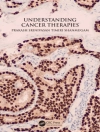This book provides a comprehensive approach to the diagnosis and management of melanoma of the lentigo maligna subtype, specifically. Authors from multiple fields provide educational information along with importantly relevant, practical, and insightful details to improve the understanding and management approach to this type of melanoma. The chapters address each aspect of this melanoma ranging from clinical presentation, clinical and pathologic diagnosis, surgical management, nonsurgical options, and followup.
There is frequent misunderstanding when diagnosing and managing this type of melanoma due to the clinical, pathologic, and surgical complexities detailed. Educational resources truly dedicated to this topic are lacking presently.
Содержание
Introduction.- Natural history and epidemiology.- Clinical diagnosis/diagnostic tools.- Use of dermoscopy.- Histologic diagnosis and pitfalls.- Surgical approach with staged excision.- Role of Mohs surgery.- Histologic evaluation of surgical margins.- Sentinel lymph node biopsy in the head and neck region.- Reconstructive approaches.- Nonsurgical treatments.- Role of radiation.- Emerging novel noninvasive imaging.- Follow-up and recurrence.
Об авторе
Kishwer Nehal is a board-certified dermatologist with advanced fellowship training in cutaneous oncology, Mohs surgery, dermatologic surgery, and laser surgery. She specializes in the surgical treatment of early-stage melanoma and high risk non-melanoma skin cancers. She is the Director of Mohs and Dermatologic Surgery at Memorial Sloan Kettering. Mohs surgery is a specialized surgical technique with high cure rates for high risk skin cancers allowing precise removal of skin cancers while preserving the surrounding healthy tissue. In her clinical research she studies noninvasive imaging techniques including confocal microscopy to improve early detection of skin cancers and expedite margin detection of skin cancers during skin surgery.
As dermatopathologist Klaus Busam examines skin tissue under the microscope to provide clinical colleagues with information about the nature of their patients’ skin disease. He is part of a multidisciplinary team of physicians dedicated to providing the best care to patients affected by skin cancer. The strength of the team reflects the depth of its expertise. Memorial Sloan Kettering sees more patients with unusual or difficult-to-diagnose skin tumors than do clinicians and dermatopathologists almost anywhere else. Furthermore, they have the most advanced diagnostic methods available. Their research focuses on improving the accuracy of skin tumor diagnosis, in particular distinguishing nevi from melanoma.
He is also the Director of the combined Memorial Sloan Kettering/Cornell Dermatopathology Training Program. In this role, he supervises the training of dermatology and pathology residents and fellows in the microscopic examination of skin diseases.












